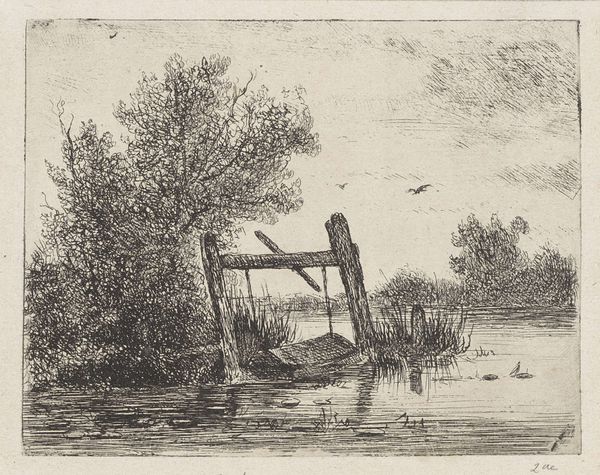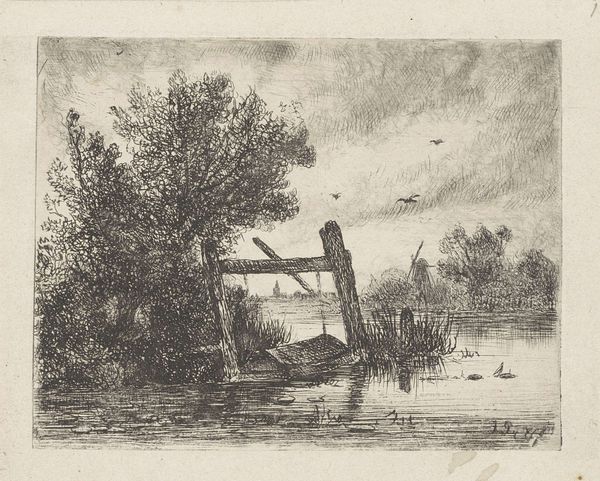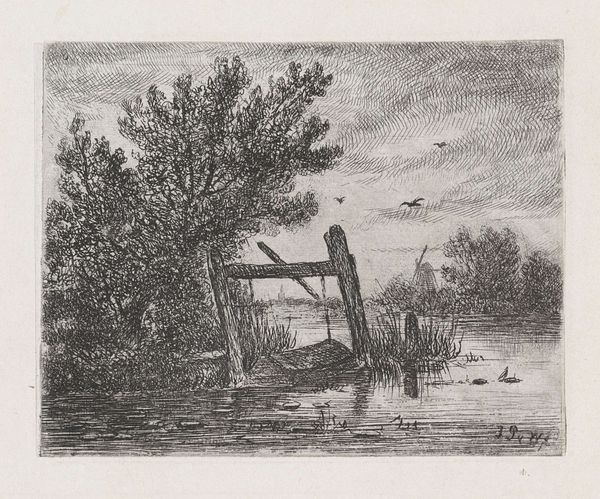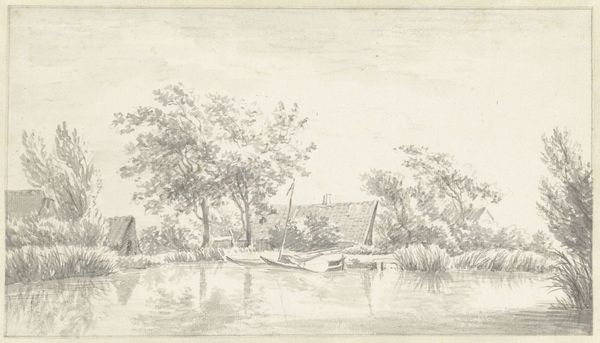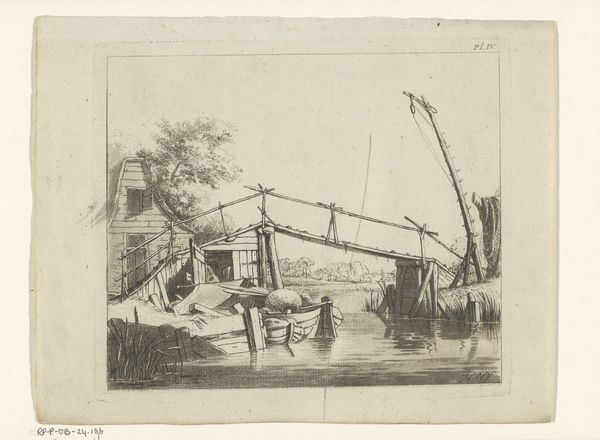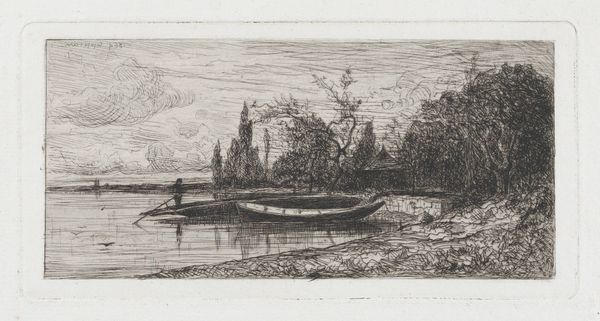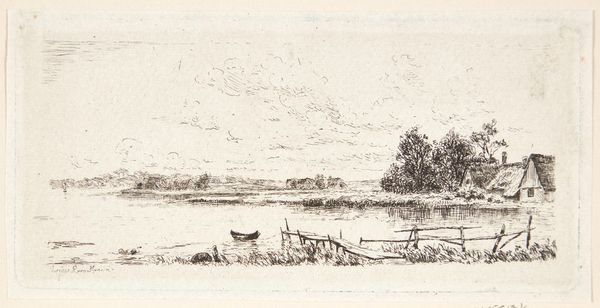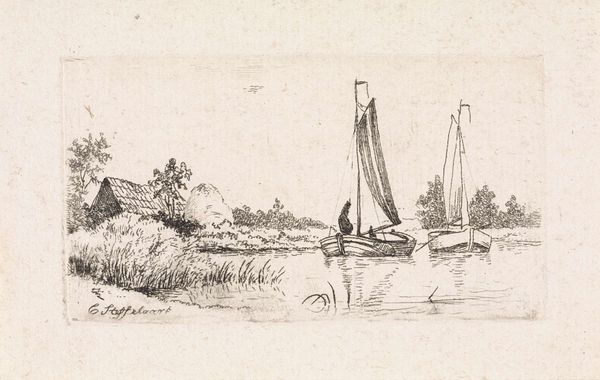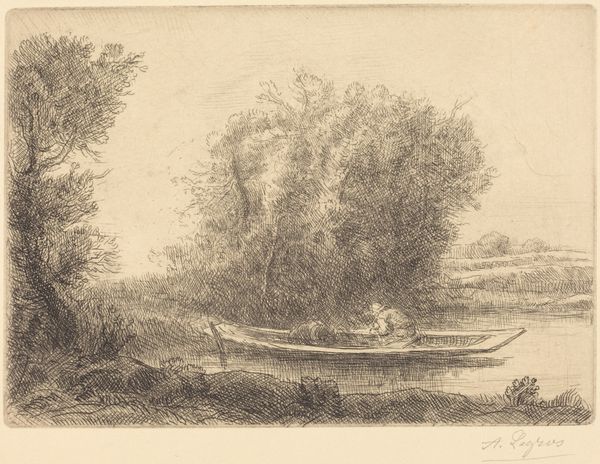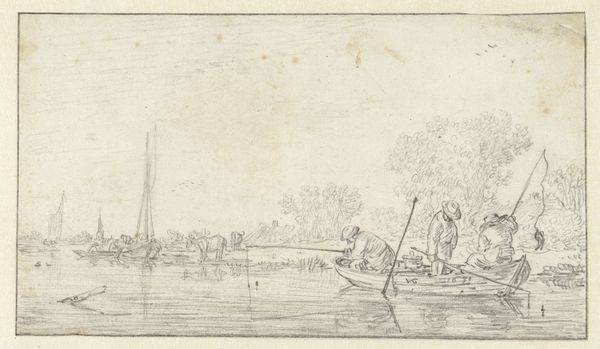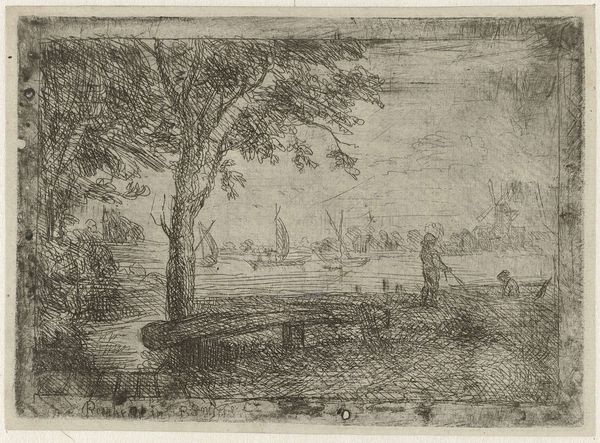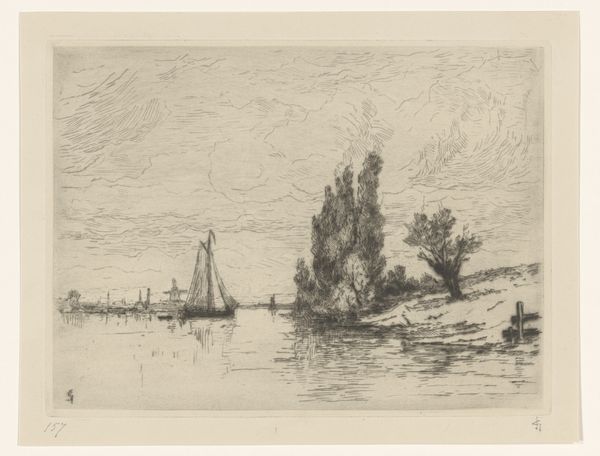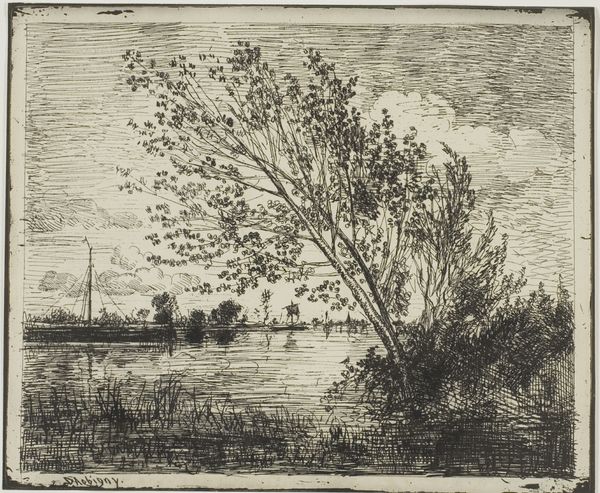
print, etching
# print
#
etching
#
landscape
#
river
#
realism
Dimensions: height 98 mm, width 123 mm
Copyright: Rijks Museum: Open Domain
Editor: So, this etching by Johannes Pieter van Wisselingh, "Visfuik aan een begroeide waterkant," created sometime between 1830 and 1878. There's almost a melancholic mood to it. What stands out to you in terms of its historical context? Curator: It's intriguing, isn't it? In mid-19th century Netherlands, there was a growing fascination with depicting everyday rural life, partly driven by romantic ideals of connecting with nature and celebrating a simpler past in the face of increasing industrialization. How do you think the rise of a museum culture plays a part in an artwork like this being collected and considered important enough to be preserved for modern audiences? Editor: That's a great point! Did the emergence of public art exhibitions also impact the art being made, especially landscapes like this one? Curator: Absolutely. The rise of public exhibitions, coupled with art criticism, shaped what artists chose to depict and how. Realism gained traction as artists like van Wisselingh sought to capture scenes faithfully, presenting a perhaps romanticized, but seemingly genuine slice of Dutch life. Does this feel inherently political to you? Editor: Political...well, maybe indirectly. I suppose that even portraying rural life as idyllic implies a certain commentary on the societal changes happening then. The piece almost invites the viewer to reflect on how rapid industrial progress affects their environment and sense of community. I suppose this artist helped popularize realism as something desirable or worth conserving, which is a position of influence and that has some political implications in that historical time. Curator: Precisely. By representing these scenes, artists engaged in a quiet, yet influential dialogue about societal values. Now, considering the role museums play in this legacy... how might the display of this work in a museum today shape its interpretation and cultural significance for contemporary audiences? Editor: Interesting question! Museums lend a sense of authority and timelessness. Putting this etching on display elevates its status and makes it accessible for education and reflection. Thank you for your insights!
Comments
No comments
Be the first to comment and join the conversation on the ultimate creative platform.
